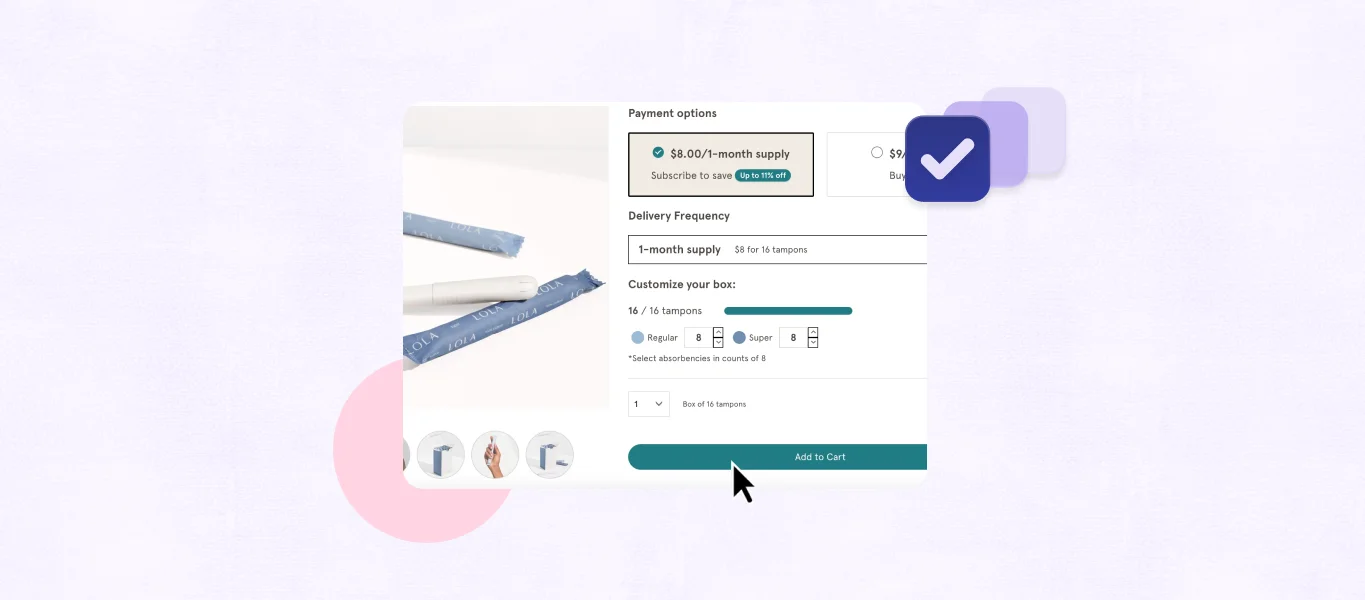We’re diving deep into ecommerce analytics by taking a closer look at our Leveraging The Power of Analytics Playbook.
Our Powerful and Profitable Subscriptions Playbooks were created by bringing together 12 of the industry’s most successful ecommerce agencies and getting their insights on growth strategies they use with their top clients. Topics range from marketing (social media and advertising), customizing the shopper experience, cross-selling and upselling, and building a brand community.
Now let’s look at the ecommerce data, analytics tools and specific strategies to follow to run a successful online store.
Ecommerce Data – Know Your Customers
It can be easy to fall into the trap that you know your customers. You’re around your product and online offerings, crafting content for marketing campaigns, expertly tweaking the shopping experience on your online store to optimize the customer journey — you feel like you know your audience inside and out.
But do you have the data that backs it up? Otherwise your hunch is just an educated guess.You might be missing a whole emerging cohort of customers based on assumptions that are just waiting to be tapped into.
Here are four great data based questions to start with to glean important insights from:
- Where do my visitors come from?
- From each platform, how many of them add to cart?
- From each platform, how many of them purchase?
- When someone lands on my site, which page leads to the most sales?
While it’s easy to make assumptions, it’s harder to recoup investments made on incorrect assumptions. Realistically, using data doesn’t need to be a strenuous or an overly mathematical process… Ultimately, those 4 questions can give a huge amount of insight and guidance on paid marketing, SEO, and CRO.
Adam Pearce, CEO at Blend Commerce

Analytics Tools – Know Your Dashboard
In terms of the tools at your disposal, Google Analytics is often the easiest to set up and is very popular for ecommerce analytics. Depending on your ecommerce platform you may have access to analytics tools from your admin portal. For merchants using subscriptions powered by Recharge they have access to our analytics suite and for Pro plan merchants Enhanced Analytics.

Whatever analytics tools you use it’s important to have both a mix of quantitative data and qualitative data. Provide customers with easy ways to get in touch with you (chat bot, contact form or support email) so that you can better understand their user experience. Finding out “the why” to any ecommerce analytics data point, whether negative or positive, will help you stay ahead of the curve and be proactive instead of reactive.
Data really is the lifeblood of a successful ecommerce business and subscription program. Beyond tracking factors like churn and customer acquisition costs that affect profit, historical, and real-time customer behavioral data can be used to take an eCommerce site and subscription program to the next level with personalization.
Aaron Quinn, Founder & CEO at eHouse Studio

Ecommerce Analytics and Subscriptions
Ecommerce subscriptions are where analytics can really shine and help you run a successful online business. First up, let’s walk through the metrics that every ecommerce business should track:
- Customer Lifetime Value (LTV) also known as Average Customer Value (ACV)
- Average Order Value (AOV)
- Customer Acquisition Cost (CAC)
- Churn rate
Focusing in on subscriptions, one of the most important data points to track is churn rate. Churn rate is when customers stop using a business’s product or services over a certain period of time. Combating churn rate, and building your retention strategy, is paramount to running a successful subscription ecommerce business.
Fortunately the cyclical nature of subscriptions gives you multiple touchpoints with your customer to collect data and analyze their customer journey.
You can track their behavior in their customer portal, or throughout the shopping cart and checkout process. You can see when they’re leaving your program and measure product performance to see which products are most often subscribed, most cancelled or most swapped. One of the most often reasons people leave a subscription is because they have too much product. Giving your customers flexibility over their subscriptions is the key to long standing (and AOV boosting) relationships.
Let’s look at a real world example, specifically how focusing on the right ecommerce analytics allowed Native deodorant to decrease its churn rate by 15%.

Using Recharge’s out-of-the-box suite of cancellation options (in this case an exit survey), Native were able to learn that the number one reason customers were cancelling from their subscription program was having too much product. Backed with this data driven conclusion they experimented with decreasing the subscription frequency for customers. Over nine months, their bet paid off with customer lifetime value increasing and churn rate declining.
Data and analytics should guide decisions and help your business make predictions. Not only is it important for evaluating performance, but it also can help inform product development and necessary adjustments to your subscription experience.
Sean Glass, Senior Strategist at BVA
Finding new products to benefit and/or excite your customers is also key which is where cross-selling and upselling come in. Statistics show that you’re 60 to 70% more likely to be able to sell to a current customer versus 5 to 20% for a new customer.

Social Media? Google Ads? Email? Let Data Be The Compass
Finding out which acquisition channels to focus on by using analytics tools and harnessing on your ecommerce data will help you spend more wisely to bring traffic to your online store. It’s more beneficial to be intentional with ad spend than it is to use a shotgun approach and hope that something sticks. Focusing on the right marketing channel, where your customers are most predominant especially with online stores that are just starting out is just good business.
Another good idea is figuring out where your audience is most active on social media and then beginning to build a brand community there. Our data show that with subscription programs, customers are less likely to churn when they feel a part of a brand community. That ecosystem centred around your products becomes your best brand advocates. That’s so valuable when data show that 74% of consumers identify word of mouth as a key influence in the purchasing process.
Let’s look at another real world example of running successful marketing campaigns and levaring ecommerce data to boost overall revenue.
Waiakea, a premier sustainable Hawaiian volcanic water brand, wanted to scale their DTC ecommerce business with help from MuteSix and Recharge powered subscriptions. With data that shows that customers are more likely to purchase and subscribe if they’re first educated on the benefits of a product a plan was put in place.

Through a multipronged approach (with varied communication per platform) educational marketing campaigns were implemented aimed at informing potential customers about Waiakea and their superior quality (and carbon neutral) water. This combined with a dynamic subscription program led to tremendous results for Waiakea. The online business saw a 172% increase in new subscriptions and a 178% increase in overall revenue.
From the moment a user lands on a site, key signals can be observed in the user site behavior data to recalibrate acquisition audience targeting, build smarter remarketing pools and fuel more advanced customer propensity models. In turn, this data can be leveraged to find efficiencies in customer acquisition strategies to help scale a sustainable ecommerce brand.
Adena Merabi, Strategic Partnerships at MuteSix

Need More Tips? Grab The Playbook
Looking for more information on ecommerce analytics and how to boost your AOV and LTV? Be sure to download the Leveraging the Power of Analytics Playbook and check out the rest of the Powerful and Profitable Subscriptions Playbooks.



